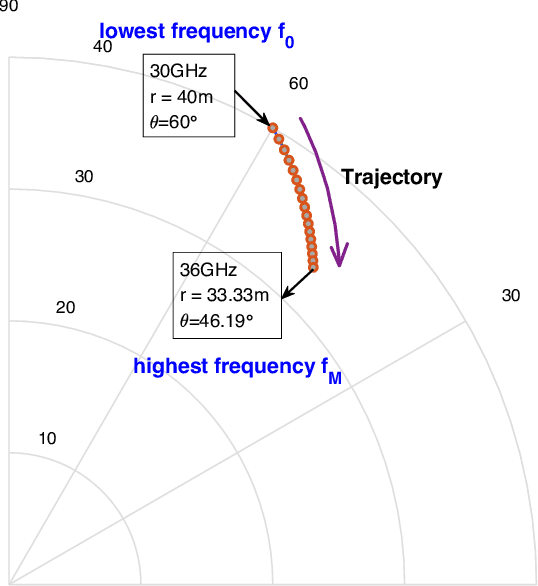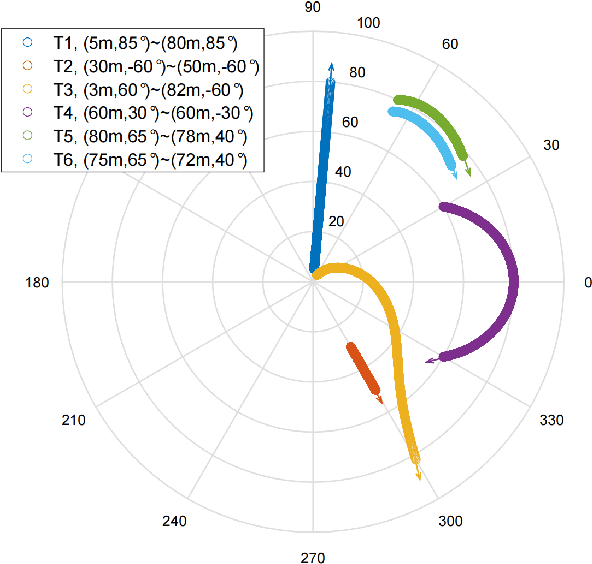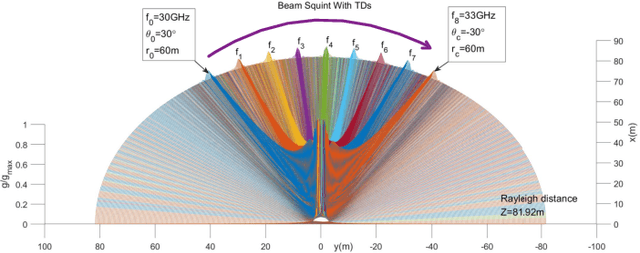Beam Squint Assisted User Localization in Near-Field Communications Systems
Paper and Code
May 23, 2022



The beam squint phenomenon in massive multi-input and multi-output wideband communications has been widely concerned recently, which generally deteriorates the beamforming performance. In this paper, we find that with the aid of the time-delay lines (TDs), the range and trajectory of the beam squint of a near-field communications system can be freely controlled, and hence it is possible to reversely utilize the beam squint for user localization. We derive the trajectory equation for near-field beam squint points and design a way to control the trajectory of these beam squint points. With the proposed design, beamforming from different subcarriers would purposely point to different angles and different distances such that users from different positions would receive the maximum power at different subcarriers. Hence, one can simply find the different users' position from the beam squint effect. Simulation results demonstrate the effectiveness of the proposed scheme.
 Add to Chrome
Add to Chrome Add to Firefox
Add to Firefox Add to Edge
Add to Edge